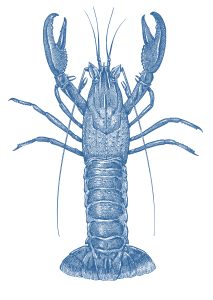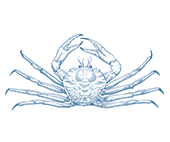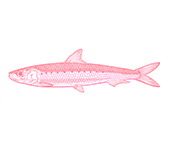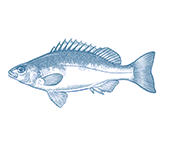




- Better Choice
Australian Farmed
Region:
QLD
- Three species of freshwater crayfish are farmed in Australia.
- Farming operations are generally small scale; crayfish are farmed in ponds or farm irrigation dams.
- Most farms do not add additional food to ponds and dams; other operations add feed, although there is little reliance on marine resources (fishmeal).
- There is minimal effluent from farming operations, as water is used for other purposes, such as watering livestock and crops.
- Chemicals are not used in crayfish farming.
- Crayfish farming is currently rudimentary and would benefit from upgrading to ensure that disease transmission remains a low risk.



Redclaw crayfish is very special, and worth seeking out. The firm sweet flesh of these crustaceans is much like that of a prawn, marron, or Balmain bug. Cook whole by boiling or steaming and then pick the meat from the shells, or split them down their length and grill. Keep cooking preparations simple – all you need is a squeeze of lemon and a little butter to make Redclaw shine.
QLD (Redclaw Crayfish 48t in 2017-18)
NSW (Yabbies 7.5t in 2015-16)
SA (Marron and Yabby 4t in 2016-17)
WA (Marron and Yabby 62t in 2015-16)
The suite of freshwater crayfish naturally occur in specific areas of Australia: marron is native to southwestern WA, redclaw crayfish only naturally occur in Queensland and yabbies are unique to western NSW.
Freshwater crayfish tend to be highly endemic – naturally occurring in small geographical ranges in Australia (eg. marron are native to southwestern WA); however they have long been moved around the country and some species are now considered to be invasive within Australia. Naturalised populations are long-established in the wild, and current farming of freshwater species is not considered an additional threat.
Freshwater crayfish are not dependent on fishmeal and fish oil sourced from wild caught fish, and require very little feed to grow to marketable size. Only marron are fed diets that include low amounts of fishmeal, some of which is sourced from offcuts of other fish, or from pest fish such as koi carp. Redclaw and yabby farms often do not use additional feed, with the farmed stock growing from pond insect life, or fed vegetable-based diets of lupins or straw hay.
Farming operations for freshwater crayfish are generally small-scale in ponds and livestock farm irrigation dams. The largest farms are for marron in WA. The water used for farming is often used to fertilise surrounding farmland or water livestock. Farming crayfish has minimal impacts on the natural environment. There is a low risk of any impact of farming on endangered terrestrial wildlife as farms; many ponds and dams are screened or netted to prevent predation, and in some cases, fences are erected around ponds to prevent access of land animals.
Marron, redclaw crayfish and yabby farms are sited on land used for agriculture or horticulture, and low-intensity farming is done in water storage dams whose primary purpose is irrigation for livestock or crop watering. There is minimal habitat alteration for freshwater crayfish production and no direct connection to natural waterways. Any effluent produced is recycled on farms and chemicals are not used in production.
There is minimal information on statewide or national management of freshwater crayfish, and little public reporting of farming operations. While this should be improved, in particular to reduce the possibility of spreading disease between farmed stock and wild populations, farming operations are of low environmental risk.


